TickerTape:
Global Digital Currency Updates

The GENIUS Act, a stablecoin regulation bill, is set for a Senate vote following revisions aimed at securing support from crypto-friendly Democrats. The bill initially faced opposition due to concerns over consumer protections, anti-money laundering provisions, and foreign stablecoin regulation. However, recent amendments have strengthened federal and state consumer laws, addressing some of these concerns.
Passing the bill in the Senate requires 60 votes, including at least seven Democratic votes. If approved, the House and Senate will need to reconcile their versions before sending a final draft to President Donald Trump. The U.S. has been under pressure to establish clear stablecoin regulations to remain competitive in the global digital asset market, especially as regions like the European Union have already implemented comprehensive frameworks such as MiCA.
Key Takeaways:
- GENIUS Act heads to Senate vote after revisions aimed at securing bipartisan support.
- Consumer protection safeguards and limits on tech companies issuing stablecoins have been added to address previous concerns.
- Requires 60 votes in the Senate, including support from at least seven Democrats.
- The House version of the bill is awaiting a vote before reconciliation with the Senate version.
- Global competition is driving urgency for U.S. stablecoin regulations.
Why it Matters:
- Regulatory clarity: Establishes a framework for stablecoin oversight in the U.S. Consumer protections: Strengthens laws to safeguard users and prevent financial risks.
- Global competitiveness: Helps the U.S. keep pace with international crypto regulations.
- Political implications: The bill has faced partisan debate, particularly regarding Trump’s involvement in digital assets.
- Market stability: A regulated stablecoin environment could enhance trust and adoption.
Société Générale’s crypto division, SG Forge, is preparing to launch a dollar-backed stablecoin on Ethereum, making it the first global banking group to issue a publicly accessible stablecoin tied to the U.S. dollar. The token will initially serve institutional investors, leveraging SG Forge’s e-money license for legal operation across the European Union. The launch is expected in the coming weeks, according to The Big Whale.
SG Forge’s move follows its 2023 debut of the EURCV euro stablecoin, which currently has a market capitalization of $46.5 million, significantly behind competitors like Circle’s EURC token. While euro-denominated stablecoins make up only a fraction of the $243 billion stablecoin market, U.S. dollar stablecoins dominate, led by USDT ($151.6B) and USDC ($60.6B).
Key Takeaways:
- SG Forge to launch first publicly accessible dollar-backed stablecoin by a major global bank.
- Initially available on Ethereum, with Solana support expected later.
- Aimed at institutional investors, operating under SG Forge’s EU e-money license.
- Follows the 2023 launch of SG Forge’s euro stablecoin, EURCV.
- Stablecoin adoption is accelerating, with banks exploring digital asset strategies.
Why It Matters:
- Institutional adoption: Expands the role of stablecoins in traditional finance.
- Regulated banking entry: Marks a major global bank entering the stablecoin market.
- European focus: Strengthens EU-based digital asset offerings.
- Competitive landscape: Responds to rising stablecoin interest, especially among financial institutions.
- Market impact: Could shift dynamics within the $243 billion stablecoin sector.
Bitcoin Pizza Day commemorates the first known real-world transaction using Bitcoin. On May 22, 2010, Laszlo Hanyecz, a Florida-based programmer, exchanged 10,000 BTC for two large Papa John’s pizzas. At the time, Bitcoin had little to no market value, and the transaction was worth approximately $41. Despite the massive increase in Bitcoin’s value since then, Hanyecz has stated that he has no regrets, as Bitcoin had no real worth at the time, and he found the idea of trading it for pizza to be exciting.
This transaction is widely regarded as a pivotal moment in Bitcoin’s history, demonstrating its potential as a medium of exchange. Before this, Bitcoin was primarily discussed in theoretical terms, but Hanyecz’s purchase proved that it could be used for real-world transactions. Over time, Bitcoin has evolved into a widely accepted digital asset, used for everything from online purchases to large-scale financial operations. The day is celebrated worldwide, with various events and activities taking place, often involving discounts for customers who pay in Bitcoin.
Key Takeaways:
- First Bitcoin transaction: Demonstrated Bitcoin’s ability to be used for real-world purchases.
- Historical significance: Marked a turning point in Bitcoin’s adoption.
- Value appreciation: The 10,000 BTC spent on pizza would be just over 1 billion USD today.
- Community celebration: Crypto enthusiasts commemorate the day with events and promotions.
- Symbol of adoption: Highlights Bitcoin’s evolution from a niche technology to a mainstream financial asset.
- Lessons in value and time: Illustrates Bitcoin’s volatility and long-term potential.
Why It Matters:
- Proof of concept: First instance showing Bitcoin’s usability beyond theoretical discussions.
- Economic impact: Demonstrates Bitcoin’s deflationary nature and long-term value appreciation.
- Cultural relevance: Reinforces Bitcoin’s role in shaping digital finance.
- Encourages adoption: Inspires businesses and individuals to explore cryptocurrency transactions.
- Global recognition: Bitcoin Pizza Day is celebrated worldwide, reinforcing Bitcoin’s influence.
- Innovation in finance: Highlights the importance of early adoption and technological experimentation.
Crunchfish’s Offline Terminal Infrastructure (OTI) is revolutionizing offline payments, making transactions possible even in disconnected environments such as rural areas, disaster zones, and low-connectivity markets. The solution is designed to enhance both Central Bank Digital Currencies (CBDCs) and commercial payment systems, offering a modular approach that separates the roles of Payment Network Providers and Payment Service Providers. By embedding interoperable offline terminal infrastructure within payment rails, Crunchfish enables universal offline payment reception, allowing wallet issuers to innovate while ensuring seamless transactions.
Crunchfish’s architecture is built on the Reserve, Pay, and Settle model, ensuring that offline payments remain resilient and seamlessly reconciled with online systems. This model shares similarities with conditional payments, such as programmable or smart contract transactions. The company’s approach mirrors the successful EMVCo card payment architecture, allowing banks and third-party providers to offer secure, customizable offline wallets while maintaining interoperability.
Crunchfish holds key patents in offline payment solutions, including secure protocols for offline transactions with online settlement. With a U.S. patent granted and a Notice of Allowance in the EU, Crunchfish is positioned as a global leader in scalable offline payment technologies.
Key Takeaways:
- Offline payments enable financial resilience and inclusion in disconnected environments.
- Crunchfish’s OTI provides universal offline payment reception, supporting both CBDCs and commercial systems.
- Payment Network Providers establish specifications, while Payment Service Providers develop user-centric offline wallets.
- The Reserve, Pay, and Settle model ensures seamless offline payment reconciliation.
- Crunchfish’s approach mirrors the EMVCo system, enhancing interoperability while allowing issuer-level innovation.
- Crunchfish holds key patents in offline payment solutions, securing its position as a leader in the space.
Why It Matters:
- Strengthens financial resilience in disaster-prone and low-connectivity regions.
- Boosts adoption of digital currencies, ensuring offline usability for CBDCs.
- Encourages competition and innovation among banks and third-party payment providers.
- Enhances scalability, allowing millions of merchants to receive offline payments.
- Aligns with proven global payment architectures, ensuring seamless adoption.
- Positions Crunchfish as a leader in secure offline payment technologies.
The Hong Kong Legislative Council passes the Stablecoins Bill, establishing a comprehensive licensing regime for fiat-referenced stablecoins (FRS), marking a significant step forward in the region’s virtual asset regulatory framework. The primary objectives of this new regime are to further enhance Hong Kong’s regulatory framework on virtual asset (VA) activities, thereby fostering financial stability and encouraging financial innovation.
The legislation introduces stringent requirements for stablecoin issuers, including proper reserve asset management, robust stabilization mechanisms, and transparent redemption processes. Issuers must also comply with anti-money laundering regulations, risk management protocols, and regular auditing requirements.
The legislation’s implementation will include a transitional period to allow industry participants to adapt to the new requirements and obtain necessary licensing. This measured approach demonstrates Hong Kong’s commitment to fostering innovation while maintaining financial stability and investor protection.
The government plans to expand its regulatory framework with upcoming consultations on VA over-the-counter and custodian services, along with a second policy statement on virtual asset development, indicating a comprehensive approach to digital asset regulation.
Key Takeaways:
- Mandatory licensing requirement for FRS issuers operating in Hong Kong or issuing HKD-referenced stablecoins
- Strict requirements for reserve asset management, redemption processes, and client asset segregation
- Retail investors limited to licensed FRS products only
- Implementation expected within 2025 with transitional arrangements
- Additional consultations on VA over-the-counter and custodian services forthcoming
Why It Matters:
- The regulatory framework demonstrates Hong Kong’s commitment to balancing innovation with risk management in the digital asset space
- The “same activity, same risks, same regulation” principle aligns with international standards while maintaining flexibility
- The legislation positions Hong Kong as a leader in stablecoin regulation while reinforcing its status as an international financial hub
- The phased implementation approach shows consideration for industry adaptation needs
- The comprehensive regulatory scope suggests a long-term commitment to developing the virtual asset ecosystem





